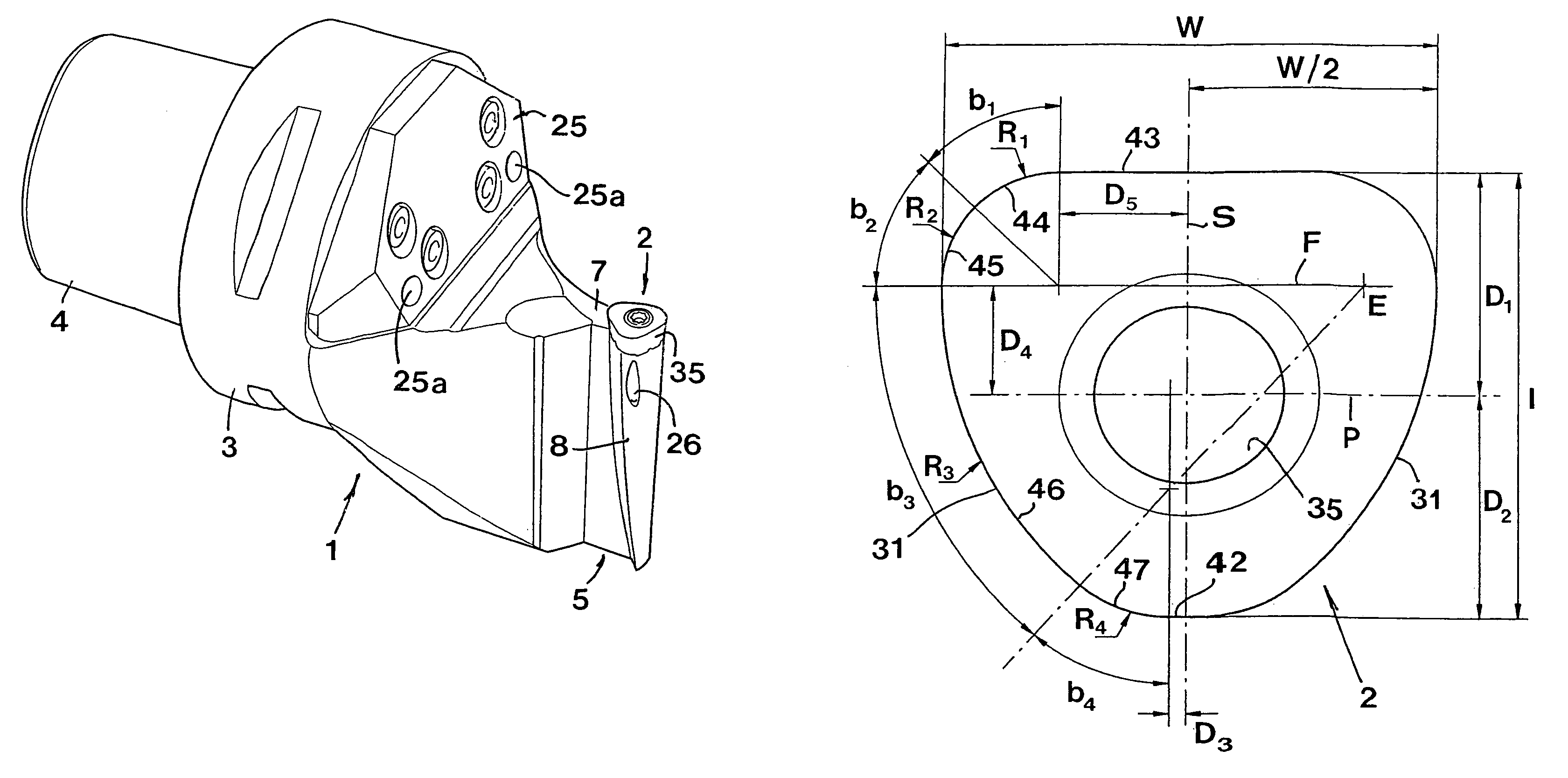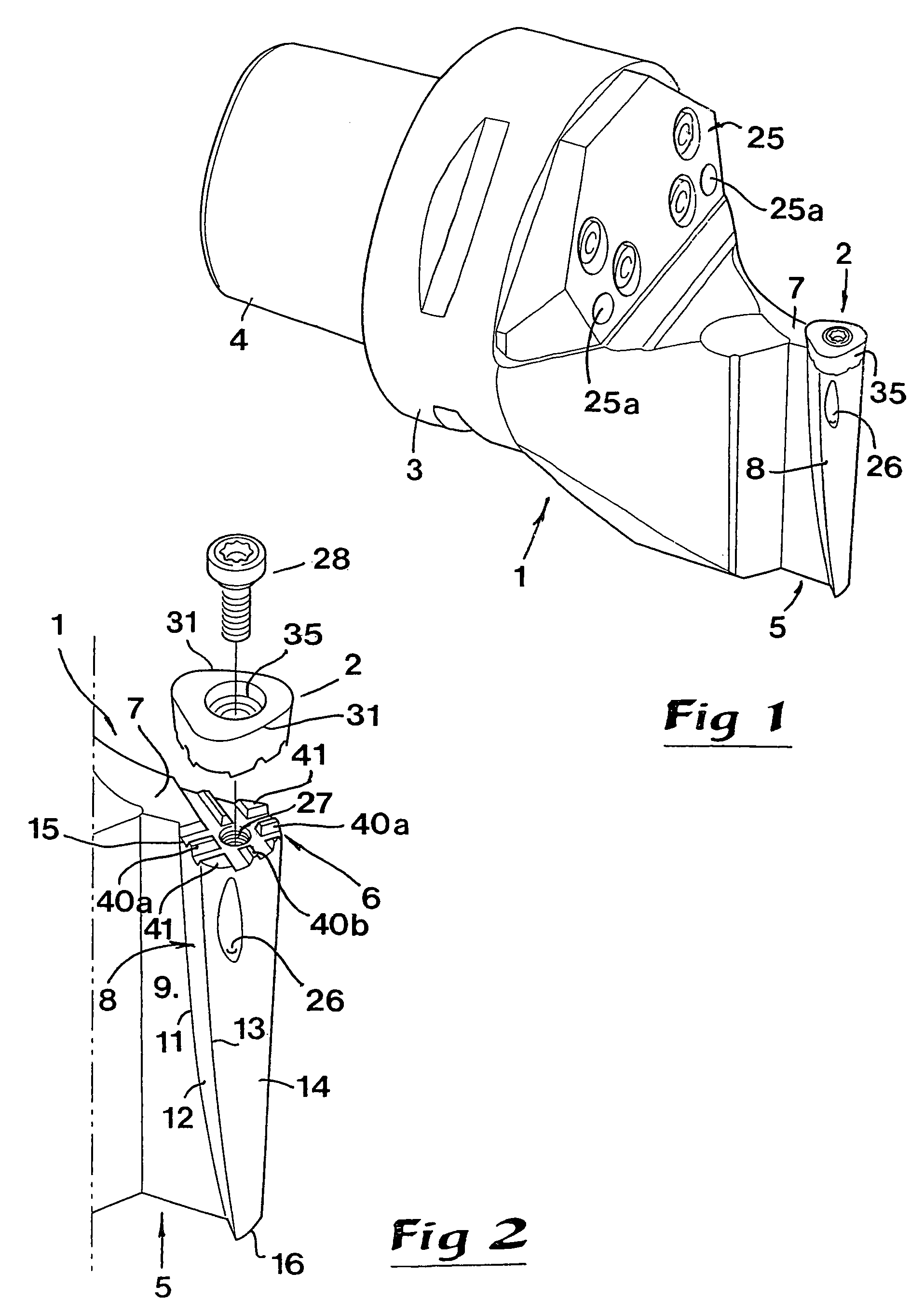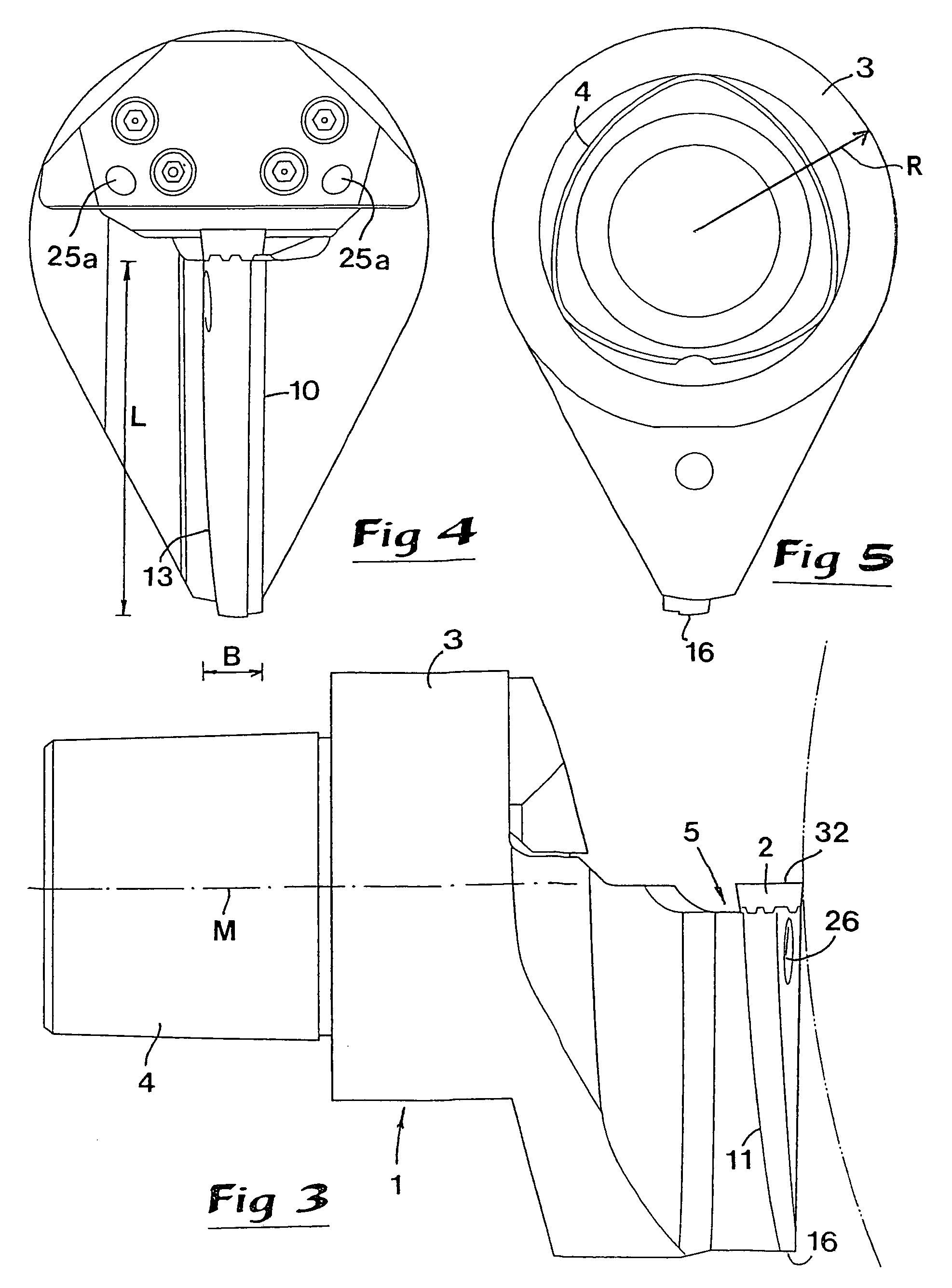Tool and cutting insert for the fine turning of grooves in workpieces
a technology of rotating symmetry and cutting inserts, which is applied in the direction of cutting inserts, manufacturing tools, shaping cutters, etc., can solve the problems of no attractive alternative, loss of cutting edge precision, and complex removal of worn out cutting inserts, so as to prevent angular displacement of inserts
- Summary
- Abstract
- Description
- Claims
- Application Information
AI Technical Summary
Benefits of technology
Problems solved by technology
Method used
Image
Examples
Embodiment Construction
[0035]In FIGS. 1 and 2, a tool is shown in the form of a turning tool, which comprises a basic body 1 and a cutting insert 2, which is detachably mounted on the basic body. In the example, the basic body 1 includes a cylindrical main part 3 from the back side of which a coupling element 4 extends, which can be fixed in a machine tool (not shown). In the front, the basic body has a bracket 5 having a cutting seat 6 in which the cutting insert 2 can be fixed. Said bracket includes a narrow neck part 7 and a support part 8 protruding laterally from the same.
[0036]The cutting insert 2 will be described more in detail later with reference being made to FIGS. 7–10.
[0037]Now reference is also made to FIGS. 3–6, which together with FIGS. 1 and 2 illustrate the design of the bracket 5 in detail. In FIG. 6 is seen how the comparatively thin neck part 7 is delimited by two planar, opposite side surfaces 9, 10, which advantageously are mutually parallel. The support part 8 projects only from on...
PUM
| Property | Measurement | Unit |
|---|---|---|
| obtuse angle | aaaaa | aaaaa |
| obtuse angle | aaaaa | aaaaa |
| temperature | aaaaa | aaaaa |
Abstract
Description
Claims
Application Information
 Login to View More
Login to View More - R&D
- Intellectual Property
- Life Sciences
- Materials
- Tech Scout
- Unparalleled Data Quality
- Higher Quality Content
- 60% Fewer Hallucinations
Browse by: Latest US Patents, China's latest patents, Technical Efficacy Thesaurus, Application Domain, Technology Topic, Popular Technical Reports.
© 2025 PatSnap. All rights reserved.Legal|Privacy policy|Modern Slavery Act Transparency Statement|Sitemap|About US| Contact US: help@patsnap.com



